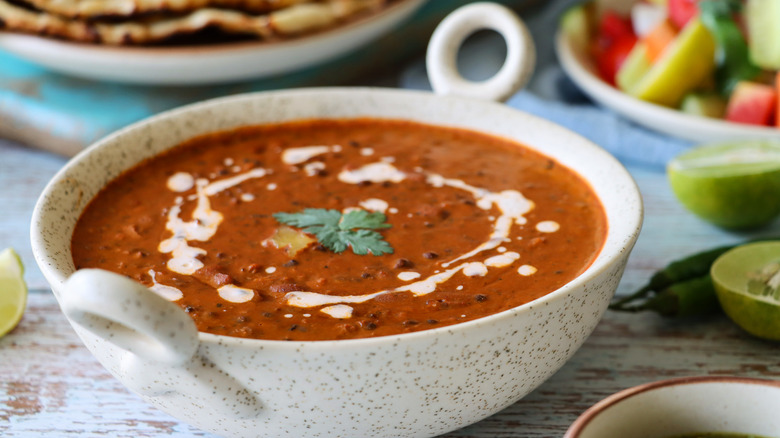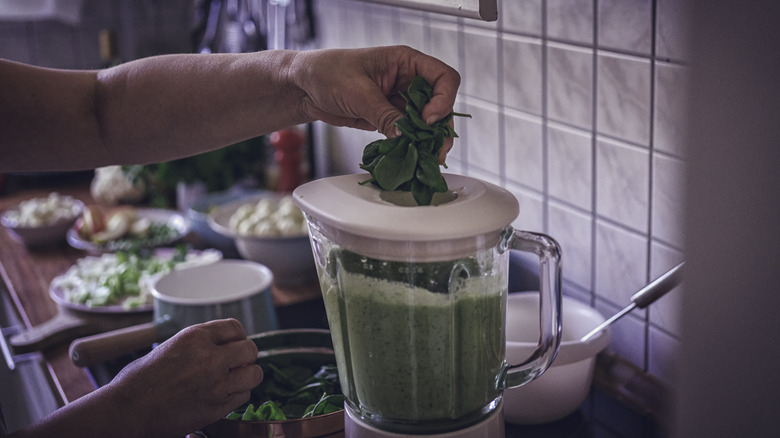The Nutritious Hack To Thicken Your Curry Sauce
Curry sauces — there are many — bring bursts of flavors to a range of dishes, providing a broad spectrum of notes that can include warm spice, fiery piquancy, tartness, and more. Curries also offer a round, coating mouthfeel that adds weight and body. As such, rarely are they thin. So many cooks and chefs have had to deal with the question of how to properly thicken curry sauce, and just as there are many varieties, so too are there many approaches to yield a properly stout sauce. From roux to reduction, finding the best thickener or process is a factor in the sauce and the desired outcome. If you seek to add a nutritious boost along the way, then one ingredient stands out: vegetable puree.
Of course, pureed vegetables are no monolith, either. Yams, winter squash, peas, legumes, and more can be whipped into loose pastes that add just the kind of body you need, while also bringing along a host of nutrients and fiber. Again, the question arises of what the right route is, and again, you must consider the flavors of the dish. A more subtle curry might be marred by the inclusion of a vegetable with a strong flavor, and a dish that already features plenty of starch might not need a starchy vegetable puree ladle on top. And don't be afraid to combine vegetables for flavor combinations and thickness, such as sweet yellow squash with a waxy potato for heft.
Adding flavor with your puree
Once you've decided the vegetable that will pair well with your curry sauce, the process is pretty simple. It may be that you want a straightforward vegetable puree; if so, boil the vegetable in plain water before pureeing it in a heat-resistant blender or with an immersion blender. While you will want to drain the excess water away, make sure you reserve a bit to thin out the puree if it seems too tight.
There is nothing to say that you can't add to the flavor of your vegetable puree, though. If the final curry contains meat, consider simmering it in chicken or other meat stocks for a bit more meatiness. For a vegetarian umami punch, vegetable stock, mushroom stock, soy sauce, or some combination will work as flavorful simmering mediums. You can also add extra spices or herbs, such as ground cinnamon, coriander, cardamom, ginger, anise, cilantro, chiles, or garlic to underline the flavors of the curry sauce.
One more option you may want to consider is one that is a bit more divisive than a simple vegetable puree, but no stranger to curries, especially those from India. Okra, be it in pieces or blended, can thicken a sauce or stew — most notably, gumbo — thanks to the slimy mucilage it contains. While some people turn up their noses at this very element, okra can bring about the body your curry needs with an unobtrusive, sweet, grassy flavor that pairs well with the bold flavors that curries can contain.

